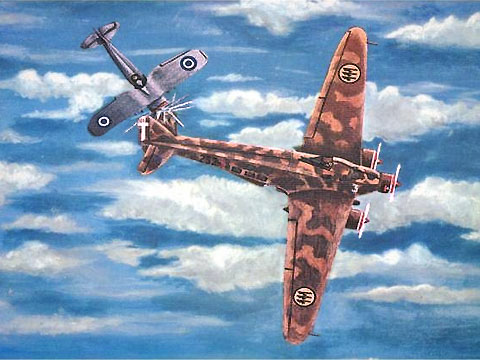
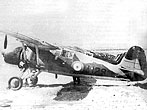  
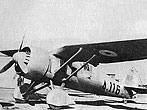  
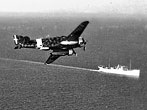  
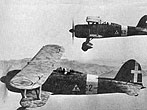  
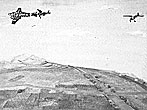  
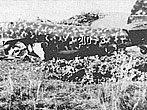  
  
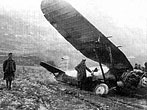  
  
  
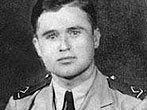  
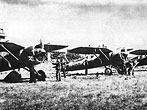  
|
 |
2 November 1940 - During the Greco-Italian War (HAF pilot Marinos Mitralexis, the Greek kamikaze)
On November 2, a squadron of 15 Italian Cant 1007Z bombers, with Fiat CR.42 fighter escorts, headed towards Thessaloniki. Soon they were spotted and intercepted by Greek PZL P.24 fighters of the 22nd Squadron.
During the Greco-Italian War, a squadron of twenty-seven Italian Savoia-Marcheti SM-70 bombers, with Fiat CR.42 fighter escorts heading towards the Greek city of Thessalonika, are spotted and intercepted by Greek PZL P-24 fighters of the RHAF 22nd Sq.
During the dogfights, three of the bombers were shot down, while the rest reached their targets, released their bombs and commenced their return to their base in Albania.
Greek Flying Officer Marínos Metraléxes, who had already shot down one bomber, was now out of ammunition, so he aimed the nose of his PZL P-24 (serial no: Δ 130) right into an enemy bomber's tail (serial no: ΜΜ 22381), smashing the rudder and sending the bomber out of control. He then had to make an emergency landing near the crashed bomber.
Having landed, Metraléxes arrested the four surviving crew members of the enemy aircraft using his pistol.
For this extraordinary feat, Metraléxes was promoted to Wing Commander, and received Greece's highest medal for bravery, the Gold Cross of Valour.
He was the only Royal Hellenic Air Force officer with the Gold Cross of Valour during the war. In September 1948, during a routine training flight in an Airspeed Oxford, Metraléxes died crashing in the south Aegean Sea.
Marinos Mitralexis (1920-1948) was a Greek Air Force pilot during World War II. He became legendary when he managed to bring down an enemy bomber by ramming its tail, on November 2, 1940.
In September 1948, during a routine training flight in an Airspeed Oxford, he died crashing in the south Aegean Sea.
|